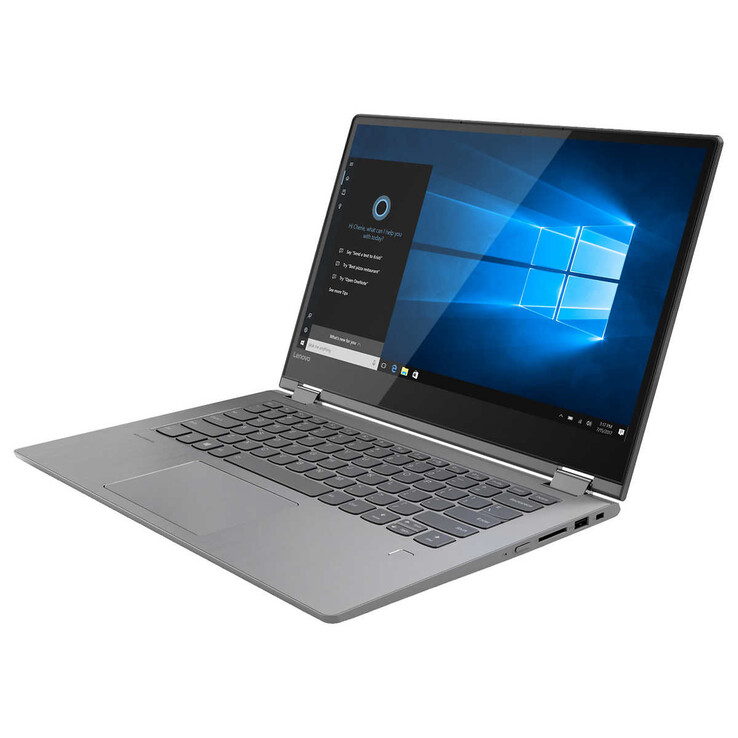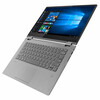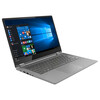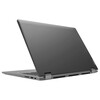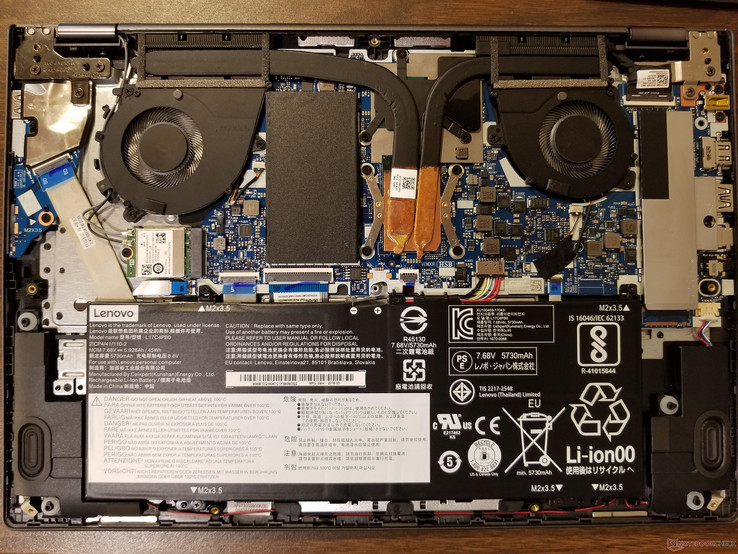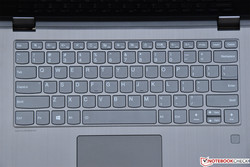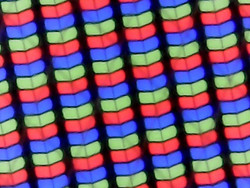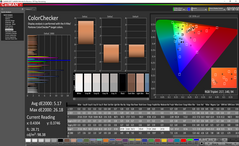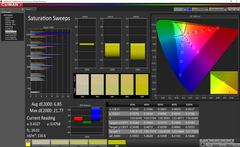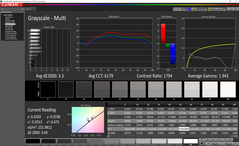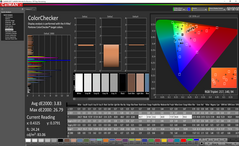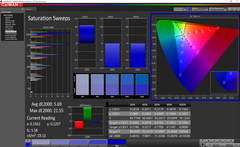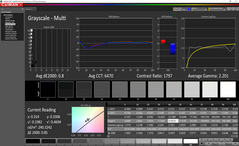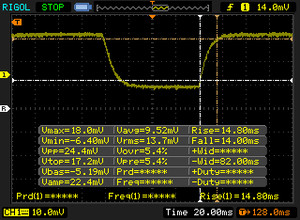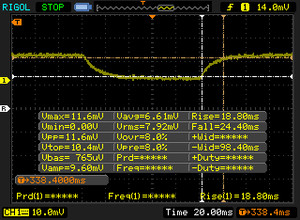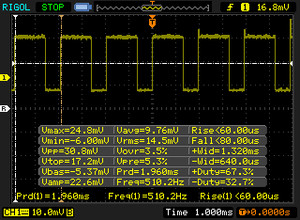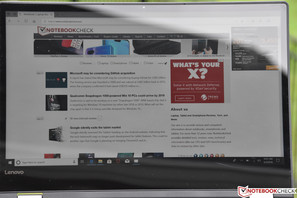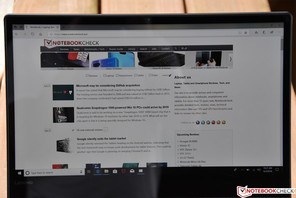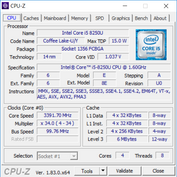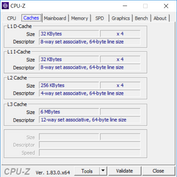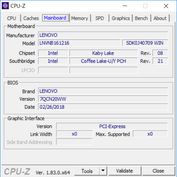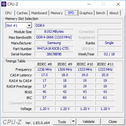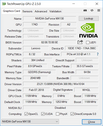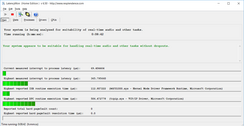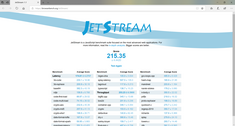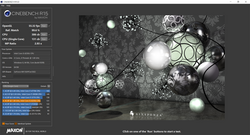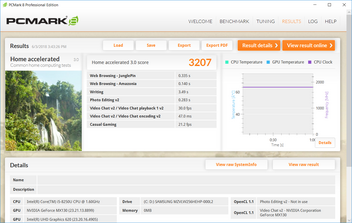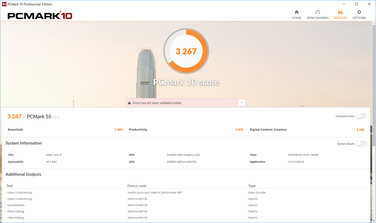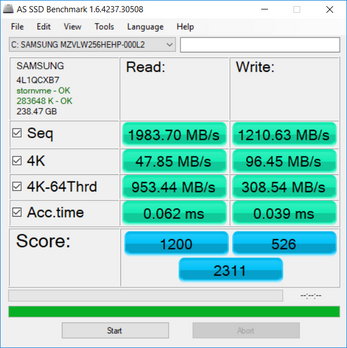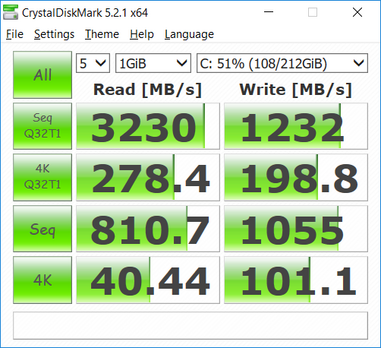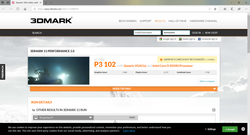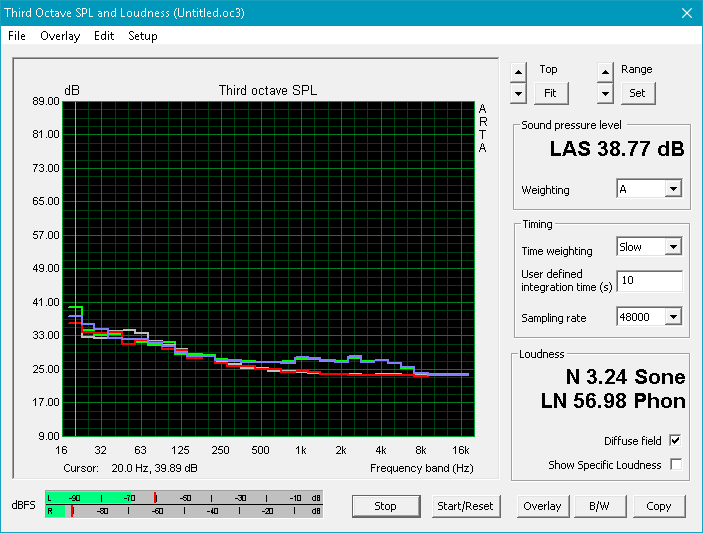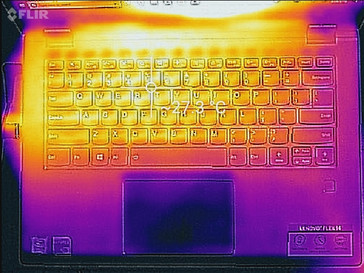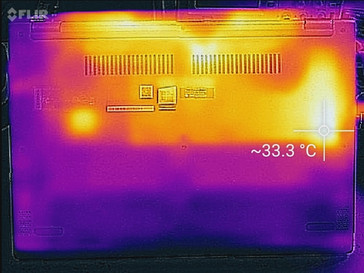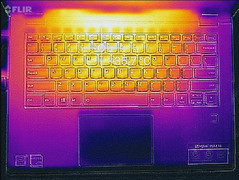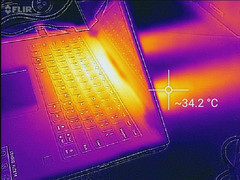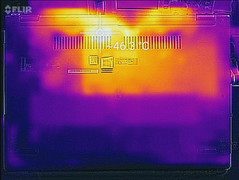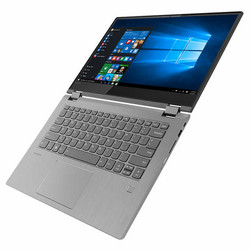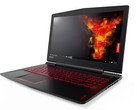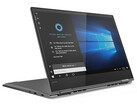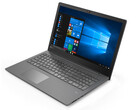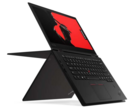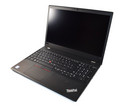Lenovo Flex 6-14IKB (i5 8250U, GeForce MX130) Convertible Review

Lenovo’s Flex 14 is back in our labs today with an updated design and newer components, including an 8th-generation Core i5-8250U. Some close competitors include the HP Pavilion x360 14, Lenovo Yoga 920, and Asus VivoBook Flip 14. Priced at $800, is this sleeker iteration of the midrange consumer device worth considering?
Case
One of the more notable revisions the Flex 6 14 boasts is its sleeker, slightly smaller case. Although it’s still predominantly constructed of plastic, the brushed metal top cover grants the palm rest a somewhat better-than-budget feel, along with perhaps a bit better stability. There’s still some flex in play, however, when moderate pressure is applied to the base unit. This is most notable in the bottom center and is partially a consequence of the separate (and rather small) rubber feet on either side of the unit (in contrast to the long horizontal rubber feet of, for instance, the Dell XPS 13 and HP Spectre machines).
Thanks to its convertible design, the Flex 6 14 maintains the 360-degree hinges that Lenovo pioneered several years back with the advent of the Yoga series of devices. The hinges do a good job of supporting the screen, helping to minimize wobble—which is good since the display finish is highly glossy.
| SD Card Reader | |
| average JPG Copy Test (av. of 3 runs) | |
| HP Pavilion x360 14-ba011ng (Toshiba Exceria Pro SDXC 64 GB UHS-II) | |
| Average of class Convertible (28.1 - 209, n=23, last 2 years) | |
| Lenovo Flex 6-14IKB (Toshiba Exceria Pro SDXC 64 GB UHS-II) | |
| Asus VivoBook Flip 14 TP401NA (Toshiba Exceria Pro M501 microSDXC 64GB) | |
| Acer Spin 3 SP314-51-548L (Toshiba Exceria Pro SDXC 64 GB UHS-II) | |
| maximum AS SSD Seq Read Test (1GB) | |
| Average of class Convertible (28.9 - 253, n=22, last 2 years) | |
| HP Pavilion x360 14-ba011ng (Toshiba Exceria Pro SDXC 64 GB UHS-II) | |
| Asus VivoBook Flip 14 TP401NA (Toshiba Exceria Pro M501 microSDXC 64GB) | |
| Lenovo Flex 6-14IKB (Toshiba Exceria Pro SDXC 64 GB UHS-II) | |
| Acer Spin 3 SP314-51-548L (Toshiba Exceria Pro SDXC 64 GB UHS-II) | |
Accessories
Our review unit shipped with an optional Lenovo Active Pen that manages 2,048 levels of pressure sensitivity.
Maintenance
Warranty
The Flex 6 14 includes a 1 year depot warranty. Typical warranty upgrades are available for an added cost.
Input Devices
Keyboard
The keyboard features comfortably sized and spaced keys with a familiar and practical layout. Keystrokes carry a short travel and require moderate actuation force; feedback is palpable but a bit on the soft side. The keys are tightly-affixed and suffer no clatter during normal use. The typing experience is acceptable, but it falls short of industry leaders such as Lenovo’s own X1 Carbon or Dell’s Latitude 7390.
The keyboard also includes a backlight, adjustable to two levels of brightness (in addition to off).
Touchpad
The Flex 6 14’s spacious (105 mm x 70 mm) Precision touchpad boasts a surface conducive to finger gliding and gestures and an imperceptible response time. The integrated buttons pale in comparison to better clickpads—mostly because of their loud operation, shallow travel, and the fact that they're harder to depress—but they work without incident for the most part.
Display
Subjectively, the Flex 6 14’s 14-inch 1920x1080 glossy touchscreen is decent indoors. It notably lacks brightness, but contrast (and black levels) seems relatively strong.
We measured an average brightness of 248.9 cd/m², which is a bit disappointing. Distribution is good at 91%; the contrast of 1398:1 is also a pleasant surprise, bolstered by the low black value of 0.18 cd/m².
| |||||||||||||||||||||||||
Brightness Distribution: 91 %
Center on Battery: 251.7 cd/m²
Contrast: 1398:1 (Black: 0.18 cd/m²)
ΔE ColorChecker Calman: 5.17 | ∀{0.5-29.43 Ø4.77}
calibrated: 3.83
ΔE Greyscale Calman: 3.3 | ∀{0.09-98 Ø5}
60.4% sRGB (Argyll 1.6.3 3D)
38.6% AdobeRGB 1998 (Argyll 1.6.3 3D)
41.86% AdobeRGB 1998 (Argyll 3D)
60.5% sRGB (Argyll 3D)
40.49% Display P3 (Argyll 3D)
Gamma: 1.943
CCT: 6179 K
| Lenovo Flex 6-14IKB M140NWF5 R2, IPS, 14", 1920x1080 | Asus VivoBook Flip 14 TP401NA BOE CQ NV140FHM-N49, IPS, 14", 1920x1080 | Acer Spin 3 SP314-51-548L BOE CQ NV140FHM-N41, IPS, 14", 1920x1080 | HP Pavilion x360 14-ba011ng Chi Mei, IPS, 14", 1920x1080 | Lenovo Yoga 920-13IKB-80Y7 AU Optronics B139HAN03.0, IPS, 13.9", 1920x1080 | |
|---|---|---|---|---|---|
| Display | -1% | -2% | 3% | 53% | |
| Display P3 Coverage (%) | 40.49 | 40.21 -1% | 39.68 -2% | 41.82 3% | 62.5 54% |
| sRGB Coverage (%) | 60.5 | 59.6 -1% | 58.9 -3% | 61.6 2% | 91.7 52% |
| AdobeRGB 1998 Coverage (%) | 41.86 | 41.54 -1% | 41 -2% | 43.33 4% | 64.1 53% |
| Response Times | -8% | -11% | 15% | -8% | |
| Response Time Grey 50% / Grey 80% * (ms) | 43.2 ? | 42 ? 3% | 43 ? -0% | 41 ? 5% | 46 ? -6% |
| Response Time Black / White * (ms) | 28.8 ? | 34 ? -18% | 35 ? -22% | 22 ? 24% | 31.6 ? -10% |
| PWM Frequency (Hz) | 510 ? | 960 ? | 1000 | 25000 ? | |
| Screen | 3% | 7% | -17% | -10% | |
| Brightness middle (cd/m²) | 251.7 | 253 1% | 220 -13% | 252 0% | 297.9 18% |
| Brightness (cd/m²) | 249 | 239 -4% | 221 -11% | 237 -5% | 278 12% |
| Brightness Distribution (%) | 91 | 76 -16% | 78 -14% | 90 -1% | 81 -11% |
| Black Level * (cd/m²) | 0.18 | 0.21 -17% | 0.18 -0% | 0.21 -17% | 0.44 -144% |
| Contrast (:1) | 1398 | 1205 -14% | 1222 -13% | 1200 -14% | 677 -52% |
| Colorchecker dE 2000 * | 5.17 | 4.29 17% | 3.98 23% | 7.29 -41% | 5.1 1% |
| Colorchecker dE 2000 max. * | 26.18 | 8.74 67% | 7.69 71% | 17.55 33% | 11 58% |
| Colorchecker dE 2000 calibrated * | 3.83 | 5.93 -55% | 4 -4% | ||
| Greyscale dE 2000 * | 3.3 | 1.49 55% | 1.68 49% | 7.48 -127% | 6.7 -103% |
| Gamma | 1.943 113% | 2.29 96% | 2.37 93% | 2.45 90% | 2.9 76% |
| CCT | 6179 105% | 6611 98% | 6382 102% | 6953 93% | 6839 95% |
| Color Space (Percent of AdobeRGB 1998) (%) | 38.6 | 38 -2% | 38 -2% | 40 4% | 64.1 66% |
| Color Space (Percent of sRGB) (%) | 60.4 | 59 -2% | 58 -4% | 61 1% | 91.7 52% |
| Total Average (Program / Settings) | -2% /
1% | -2% /
3% | 0% /
-9% | 12% /
3% |
* ... smaller is better
Color coverage is somewhat disappointing at 38.6 percent of AdobeRGB and 60.4 percent of sRGB. Accuracy isn’t the panel’s strong point with an average ColorChecker DeltaE2000 of 5.17 (and a max, 100% Blue, of 26.18)—but most of the values are acceptable for a machine of this class, and calibration does help to bring the outliers back into acceptable ranges.
Display Response Times
| ↔ Response Time Black to White | ||
|---|---|---|
| 28.8 ms ... rise ↗ and fall ↘ combined | ↗ 14.8 ms rise | |
| ↘ 14 ms fall | ||
| The screen shows relatively slow response rates in our tests and may be too slow for gamers. In comparison, all tested devices range from 0.1 (minimum) to 240 (maximum) ms. » 75 % of all devices are better. This means that the measured response time is worse than the average of all tested devices (20.2 ms). | ||
| ↔ Response Time 50% Grey to 80% Grey | ||
| 43.2 ms ... rise ↗ and fall ↘ combined | ↗ 18.8 ms rise | |
| ↘ 24.4 ms fall | ||
| The screen shows slow response rates in our tests and will be unsatisfactory for gamers. In comparison, all tested devices range from 0.165 (minimum) to 636 (maximum) ms. » 71 % of all devices are better. This means that the measured response time is worse than the average of all tested devices (31.6 ms). | ||
Screen Flickering / PWM (Pulse-Width Modulation)
| Screen flickering / PWM detected | 510 Hz | ≤ 99 % brightness setting | |
The display backlight flickers at 510 Hz (worst case, e.g., utilizing PWM) Flickering detected at a brightness setting of 99 % and below. There should be no flickering or PWM above this brightness setting. The frequency of 510 Hz is quite high, so most users sensitive to PWM should not notice any flickering. In comparison: 53 % of all tested devices do not use PWM to dim the display. If PWM was detected, an average of 8077 (minimum: 5 - maximum: 343500) Hz was measured. | |||
Performance
The Flex 6 14 is powered by Intel CPUs ranging (depending on configuration) from the Intel Pentium 4415U up to the Intel Core i5-8250U. The system can be preconfigured with up to 8 GB of DDR4 RAM and up to a 256 GB NVMe SSD as well. Our particular review unit includes the highest-end options available: the Core i5, 8 GB of RAM, and 256 GB of NVMe storage.
Processor
As has been the case fairly consistently among machines powered by 8th-generation Intel CPUs, the Flex 6 14’s Intel Core i5-8250U SoC provides a significant boost in multi-core performance over previous-generation machines of this class. We recorded 522 points in the Cinebench R15 multi-CPU benchmark, right in line with the equivalently-equipped Acer Spin 3 convertible, and some 36% ahead of the HP Pavilion x360 14 (and miles ahead of the Asus VivoBook Flip 14’s 6 W TDP Pentium N4200). The Yoga 920, powered by its Core i7-8550U, runs away with the crown.
Performance consistency under sustained load is decent, with scores dropping into the 490s (where they remain mostly consistently) after the first test run in our Multi-CPU Cinebench R15 loop test. Switching subjects, LatencyMon detected no issues with DPC latencies, so streaming real-time audio and video should not be a problem.
System Performance
The Lenovo Flex 6 14 is in the middle of the pack in our synthetic performance tests, with the Asus VivoBook Flip 14 in a distant last, of course. Scores of 3267 and 3207 in PCMark 10 and PCMark 8 Home Accelerated are not bad. The Acer Spin tops the charts of today’s comparison field with scores around 11 to 14 percent higher, but this will rarely be noticeable in everyday use.
| PCMark 8 Home Score Accelerated v2 | 3207 points | |
| PCMark 10 Score | 3267 points | |
Help | ||
Storage Devices
Thanks to its NVMe SSD (something its competitors cannot boast), the Flex 6 14 posts good storage performance scores of 1200 / 526 in AS SSD Read / Write. Scores for the ASUS VivoBook Flip aren’t available due to its use of low-cost (and slow) eMMC storage. The Yoga 920, which features the same SSD, sees similar performance. The other two competitors make an acceptable showing thanks to reasonably quick M.2 SSDs, but they can’t approach the speeds of the NVMe PM961 drive in our Flex review unit.
No secondary storage options exist for the Flex 6 14; there is but a single storage port.
| Lenovo Flex 6-14IKB Samsung PM961 MZVLW256HEHP | Acer Spin 3 SP314-51-548L Micron 1100 MTFDDAV256TBN | HP Pavilion x360 14-ba011ng Samsung CM871a MZNTY128HDHP | Lenovo Yoga 920-13IKB-80Y7 Samsung PM961 MZVLW256HEHP | Average Samsung PM961 MZVLW256HEHP | |
|---|---|---|---|---|---|
| AS SSD | -50% | -56% | 14% | -94% | |
| Copy Game MB/s (MB/s) | 231.9 | 166.2 | 319.2 | 537 ? | |
| Copy Program MB/s (MB/s) | 158.8 | 65.1 | 463.3 | 343 ? | |
| Copy ISO MB/s (MB/s) | 329.8 | 211.3 | 1341 | 1004 ? | |
| Score Total (Points) | 2311 | 867 -62% | 974 -58% | 2536 10% | 2565 ? 11% |
| Score Write (Points) | 526 | 392 -25% | 261 -50% | 608 16% | 587 ? 12% |
| Score Read (Points) | 1200 | 311 -74% | 465 -61% | 1316 10% | 1378 ? 15% |
| Access Time Write * (ms) | 0.039 | 0.056 -44% | 0.076 -95% | 0.028 28% | 0.4637 ? -1089% |
| Access Time Read * (ms) | 0.062 | 0.091 -47% | 0.093 -50% | 0.044 29% | 0.06777 ? -9% |
| 4K-64 Write (MB/s) | 308.5 | 273.6 -11% | 128.4 -58% | 391.3 27% | 419 ? 36% |
| 4K-64 Read (MB/s) | 953 | 236.1 -75% | 381.4 -60% | 1039 9% | 1112 ? 17% |
| 4K Write (MB/s) | 96.4 | 77.9 -19% | 83.9 -13% | 128.1 33% | 91.6 ? -5% |
| 4K Read (MB/s) | 47.85 | 25.41 -47% | 32.19 -33% | 48.46 1% | 45.1 ? -6% |
| Seq Write (MB/s) | 1211 | 406.9 -66% | 491.5 -59% | 885 -27% | 960 ? -21% |
| Seq Read (MB/s) | 1984 | 491.1 -75% | 515 -74% | 2282 15% | 2019 ? 2% |
* ... smaller is better
GPU Performance
The Flex 6 14’s NVIDIA GeForce MX130 is an efficient but far more capable solution than the Intel UHD Graphics varieties powering the Acer Spin 3 and Asus VivoBook Flip 14 units—and as such, we recorded scores many times as fast from the Flex. The 3DMark 11 Performance GPU score of 2868 is 76% faster than the Acer Spin 3’s 1634 and (naturally) 373% faster than that of the Asus VivoBook Flip 14. This is no gaming PC, of course, but older games at lower settings should be playable without much trouble.
| 3DMark 11 Performance | 3102 points | |
Help | ||
| low | med. | high | ultra | |
|---|---|---|---|---|
| BioShock Infinite (2013) | 115 | 61 | 48 | 22 |
Emissions
System Noise
As expected, the Flex 6 14 is generally silent (the fan remains off) while idling, and it only becomes moderately noisy under load conditions (almost 11 dB(A) above environmental noise levels in our tests). This is slightly better than the competition. We noticed no coil whine or electronic noise from our review unit, whether unplugged or charging.
Noise level
| Idle |
| 28.5 / 28.5 / 28.9 dB(A) |
| Load |
| 39.1 / 39.1 dB(A) |
 | ||
30 dB silent 40 dB(A) audible 50 dB(A) loud |
||
min: | ||
| Lenovo Flex 6-14IKB GeForce MX130, i5-8250U, Samsung PM961 MZVLW256HEHP | Acer Spin 3 SP314-51-548L UHD Graphics 620, i5-8250U, Micron 1100 MTFDDAV256TBN | HP Pavilion x360 14-ba011ng GeForce 940MX, i5-7200U, Samsung CM871a MZNTY128HDHP | Lenovo Yoga 920-13IKB-80Y7 UHD Graphics 620, i5-8550U, Samsung PM961 MZVLW256HEHP | |
|---|---|---|---|---|
| Noise | -5% | -7% | 4% | |
| off / environment * (dB) | 28.5 | 30 -5% | 30 -5% | 28 2% |
| Idle Minimum * (dB) | 28.5 | 30 -5% | 31.2 -9% | 28 2% |
| Idle Average * (dB) | 28.5 | 30 -5% | 31.2 -9% | 28.8 -1% |
| Idle Maximum * (dB) | 28.9 | 30 -4% | 31.7 -10% | 30.3 -5% |
| Load Average * (dB) | 39.1 | 38.5 2% | 38.4 2% | 34.5 12% |
| Load Maximum * (dB) | 39.1 | 44 -13% | 42.1 -8% | 34.3 12% |
* ... smaller is better
Temperature
Under load, temperatures are surprisingly cool on the Flex 6 14; we measured averages of 27.2 °C and 30.3 °C on top and bottom, respectively, with only one really troubling hot spot in the top center quadrant of the underside (46 °C). However, idle values were a bit more elevated than normal—so those who resent a warm lap while computing might want to take heed.
(+) The maximum temperature on the upper side is 35.8 °C / 96 F, compared to the average of 35.3 °C / 96 F, ranging from 19.6 to 60 °C for the class Convertible.
(-) The bottom heats up to a maximum of 46 °C / 115 F, compared to the average of 36.8 °C / 98 F
(+) In idle usage, the average temperature for the upper side is 25 °C / 77 F, compared to the device average of 30.3 °C / 87 F.
(+) The palmrests and touchpad are cooler than skin temperature with a maximum of 23.4 °C / 74.1 F and are therefore cool to the touch.
(+) The average temperature of the palmrest area of similar devices was 27.9 °C / 82.2 F (+4.5 °C / 8.1 F).
Speakers
The Flex doesn’t manage much volume out of its two Harmon-branded, bottom-mounted speakers—just 63.5 dB in our measurements. Mids and highs are at least somewhat balanced and mostly linear, though bass is unsurprisingly nonexistent. Most likely thanks to the lackadaisical volume, we at least didn’t experience any case vibrations or annoying distortion.

Lenovo Flex 6-14IKB audio analysis
(±) | speaker loudness is average but good (73.3 dB)
Bass 100 - 315 Hz
(-) | nearly no bass - on average 16.3% lower than median
(-) | bass is not linear (15.9% delta to prev. frequency)
Mids 400 - 2000 Hz
(+) | balanced mids - only 2.7% away from median
(+) | mids are linear (6.9% delta to prev. frequency)
Highs 2 - 16 kHz
(+) | balanced highs - only 3.9% away from median
(±) | linearity of highs is average (10.8% delta to prev. frequency)
Overall 100 - 16.000 Hz
(±) | linearity of overall sound is average (24.8% difference to median)
Compared to same class
» 75% of all tested devices in this class were better, 7% similar, 19% worse
» The best had a delta of 6%, average was 20%, worst was 57%
Compared to all devices tested
» 75% of all tested devices were better, 5% similar, 20% worse
» The best had a delta of 4%, average was 24%, worst was 134%
Asus VivoBook Flip 14 TP401NA audio analysis
(-) | not very loud speakers (63.5 dB)
Bass 100 - 315 Hz
(±) | reduced bass - on average 9% lower than median
(-) | bass is not linear (17.4% delta to prev. frequency)
Mids 400 - 2000 Hz
(+) | balanced mids - only 2.8% away from median
(+) | mids are linear (6.9% delta to prev. frequency)
Highs 2 - 16 kHz
(±) | higher highs - on average 5.1% higher than median
(+) | highs are linear (6.2% delta to prev. frequency)
Overall 100 - 16.000 Hz
(±) | linearity of overall sound is average (18.5% difference to median)
Compared to same class
» 40% of all tested devices in this class were better, 8% similar, 52% worse
» The best had a delta of 6%, average was 20%, worst was 57%
Compared to all devices tested
» 41% of all tested devices were better, 8% similar, 51% worse
» The best had a delta of 4%, average was 24%, worst was 134%
Energy Management
Power Consumption
Power consumption is one area in which the Flex suffers a bit, presumably as a consequence of its NVIDIA graphics adapter and NVMe storage drive. Under load, it’s quite a bit hungrier than the Acer Spin 3—some 14 W hungrier on average—and while idling it spikes to 9.4 W.
| Off / Standby | |
| Idle | |
| Load |
|
Key:
min: | |
| Lenovo Flex 6-14IKB i5-8250U, GeForce MX130, Samsung PM961 MZVLW256HEHP, IPS, 1920x1080, 14" | Asus VivoBook Flip 14 TP401NA Pentium N4200, HD Graphics 505, 128 GB eMMC Flash, IPS, 1920x1080, 14" | Acer Spin 3 SP314-51-548L i5-8250U, UHD Graphics 620, Micron 1100 MTFDDAV256TBN, IPS, 1920x1080, 14" | HP Pavilion x360 14-ba011ng i5-7200U, GeForce 940MX, Samsung CM871a MZNTY128HDHP, IPS, 1920x1080, 14" | Lenovo Yoga 920-13IKB-80Y7 i5-8550U, UHD Graphics 620, Samsung PM961 MZVLW256HEHP, IPS, 1920x1080, 13.9" | |
|---|---|---|---|---|---|
| Power Consumption | 30% | 28% | -17% | 13% | |
| Idle Minimum * (Watt) | 4.4 | 4.26 3% | 2.9 34% | 4.2 5% | 3.1 30% |
| Idle Average * (Watt) | 5.3 | 7.1 -34% | 5.2 2% | 7.2 -36% | 6.6 -25% |
| Idle Maximum * (Watt) | 9.4 | 7.44 21% | 5.4 43% | 9.8 -4% | 7 26% |
| Load Average * (Watt) | 43.6 | 1.4 97% | 29.4 33% | 44 -1% | 35.2 19% |
| Witcher 3 ultra * (Watt) | 34 | ||||
| Load Maximum * (Watt) | 40.5 | 15.6 61% | 29.6 27% | 61 -51% | 34.6 15% |
* ... smaller is better
Battery Life
Naturally, this behavior negatively affects battery life, though it’s difficult to get upset over the nearly 7 hours we recorded during our standardized web surfing test. This result still beats both the Asus VivoBook Flip 14 and HP Pavilion x360 14 by 6 to 10%, though the Acer Spin 3—complete with its identical CPU and efficient integrated graphics—coasts on ahead by some 20% with a life of 496 minutes.
| Lenovo Flex 6-14IKB i5-8250U, GeForce MX130, 45 Wh | Asus VivoBook Flip 14 TP401NA Pentium N4200, HD Graphics 505, 39 Wh | Acer Spin 3 SP314-51-548L i5-8250U, UHD Graphics 620, 52.5 Wh | HP Pavilion x360 14-ba011ng i5-7200U, GeForce 940MX, 41.5 Wh | Lenovo Yoga 920-13IKB-80Y7 i5-8550U, UHD Graphics 620, 70 Wh | |
|---|---|---|---|---|---|
| Battery runtime | |||||
| WiFi v1.3 (h) | 6.9 | 6.5 -6% | 8.3 20% | 6.2 -10% | 11.4 65% |
Pros
Cons
Verdict
Lenovo’s Flex 6 14 represents another middle-of-the-road mainstream consumer option for those in search of a no-nonsense, moderately-sized convertible but aren’t willing to spend the money for a higher-end option such as a Yoga 920. Compared with its more expensive brethren, the Flex 6 14 settles for flimsier plastic casing and aesthetically pedestrian styling, but it at least manages a brushed metal-lined palm rest and slim bezels for a more modernized design. The input devices are passable, but typists expecting the luxury of a premium Ultrabook keyboard should be sure to spend a little time with the Flex 6 14’s before committing. Likewise, the display suffices for indoor use, but its glossy finish and weak brightness are quickly overcome by disruptive reflections outdoors.
Lenovo's Flex 6 14 makes sense for someone interested in a well-performing convertible with active stylus options who perhaps isn’t as concerned about premium input devices and case design or outdoor use.
Design quibbles notwithstanding, the Flex 6 14’s performance is perfectly adequate. Thanks to its 8th-generation Core i5 CPU, GeForce MX130 GPU, sufficient physical memory, and NVMe SSD, the Flex outclasses many of its peers with regard to storage performance and graphical capability. This is no gaming laptop, but it’s nice to have that flexibility if function over form is the theme of the day. The inclusion of a Lenovo Active Pen with our review configuration is also a serious bonus for anyone who favors stylus-based input or drawing.
At $800, Lenovo's Flex 6 14 makes sense for someone interested in a well-performing convertible with active stylus options who perhaps isn’t as concerned about premium input devices and case design/stability or outdoor use. For a few hundred bucks more, the next grade of machines (Yoga 920, XPS 13) resolves most of these complaints—but with today’s revisions in place, the Flex 6 14 seems positioned as a more practical midrange competitor than its predecessors.
Lenovo Flex 6-14IKB
- 06/09/2018 v6 (old)
Steve Schardein


